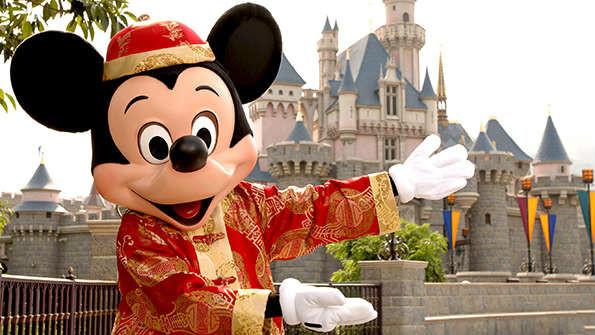HONG KONG is in the grip of Mickey mania. It is pouring, unbearably humid and the official opening on September 12th is days away. But Hong Kong Disneyland is already packed. During a “rehearsal” last week it attracted close to its 30,000 daily capacity, forcing visitors to queue for hours. Ten thousand a day could visit from China’s mainland alone: hundreds of extra border guards are in place this weekend in readiness.
It is a good omen for those hoping to profit from Asia’s newest theme park—six years in the making at a cost of $3.5 billion. One is Walt Disney itself. This is only the American group’s third international amusement park and its track record is mixed. Tokyo Disneyland makes money, but Euro Disney in Paris (of which it owns 39%) nearly went bankrupt and remains heavily indebted. This time, Disney’s money should be safe. The Hong Kong park is predicted to attract a healthy 5.6m visitors in its first year, with numbers rising as it taps into the growing wealth of China’s middle class. Disney’s financial exposure is through a joint venture with the Hong Kong government—Disney paid $314m for its 43% stake. In return it gets management fees and royalties on merchandising, food and the nearby hotels.
Hong Kong should also profit. The government has invested heavily in securing the park: granting Disney a beautiful site on Lantau island, lending construction money and laying a dedicated train line (the carriages come with Mickey-shaped windows). Some costs will be defrayed through profits on its 57% stake in the park. But the main gains will come indirectly. The new Disneyland should help almost double tourist numbers this year, according to the city’s tourist authority.
To extract the most from its guests, Hong Kong Disneyland has tried to adapt to local tastes. Though its attempts to serve shark’s fin soup, a local delicacy, were thwarted by Greenpeace, dim sum restaurants sit, incongruously, on the wild west-themed “Main Street, USA.” Cartoon character-emblazoned merchandise comes in solid gold, and for the camera-mad Chinese there are fewer scary rides and more costumed staff scattered about for “photo-ops”.
The park’s layout and opening date are ruled by strict feng-shui principles, but Disney may need more than this to persuade the cost-conscious Chinese to spend. Rather than buy official photographs, they tend to snap their own, even posing with shop toys which they then do not buy. Prices at HK$295 ($38) for an adult ticket on a weekday are cheaper than at other Disney parks. But whether such concessions create enough repeat business for long-term success remains to be seen. Several visitors complained to your correspondent that the park was too Chinese—with too many shops and not enough American razzle.
